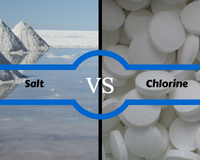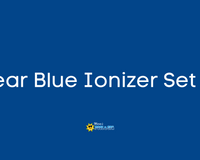The Complete Guide to Hot Tub Insulation

The Complete Guide to Hot Tub Insulation (Types, Pros, Cons and More)
Anyone buying a hot tub in 2023 wants to ensure that it is as energy efficient as possible. After all, an efficient hot tub costs you less on your monthly power bill that one that isn’t. Just as it does in your house, hot tub insulation plays the most crucial role in ensuring your hot tub makes the best use of the power coming into it.
At Hydropool, we have evolved our insulation throughout the years, using all three of the major methods of insulation during different eras. This is an area our engineers regularly work on, not an area we set and forget. We do this because our customers ask us regularly about efficiency, and we know it is a top-of-mind concern.
What insulation does more than anything else is keep heat from moving. With hot tubs, it is used to trap heat to take advantage of its properties. You want to trap heat in a hot tub because otherwise your hot tub’s heater must work hard. That’s bad for a couple of reasons: a) it costs you money on your monthly power bill and b) it creates wear and tear on your motor, shortening its lifespan. That will ultimately cost you even more money over time.
Making things difficult for anyone considering a hot tub, insulation widely differs between manufacturers. It is one of the greatest points of difference between companies that build hot tubs.
What we want to do with this article is show you the pros and cons of the three insulation methods commonly available in the marketplace today, in the most unbiased way possible, to explain what you’re actually buying when you decide to bring home your hot tub.
Energy Efficiency, Insulation and Hot Tubs
Hot tubs were originally heated by warming stones in a fire and dropping them in water. We have come a long way since then!
Natural sources like hot springs have been used, and you have likely seen pictures of wooden tubs, which were heated with wood fires, which were common up until the 1980s in North America. The hot tub with jets and a heater and a stand-alone shell as we know it today was invented in 1970.
But by today’s standards -- or any standards really -- these historical models were not built considering energy efficiency. The most substantial change was made in 2009, when California’s Energy Commission (CEC), began to regulate the hot tub industry. Companies had to meet set standards, or they couldn’t be sold in California, simple as that.
As California is the largest hot tub market in the world, many manufacturers immediately paid attention, adopting methods of insulation designed to meet or exceed CEC standards. Many others left the business at this point or abandoned California as a market.
The CEC has advanced these standards since then. While insulation had been adopted into hot tubs prior to the CEC’s regulations, the move accelerated insulation development. It remains the industry’s primary measure of ensuring energy efficiency today.
We’re big supporters of energy efficiency in all its forms! Which is why all of our hot tubs are CEC certified and sold throughout California.
What is the best hot tub insulation?

There are three main types of insulation in hot tubs today, and each of these types of insulations can pass California’s rigorous standards. So they are all capable of being considered energy efficient.
The three types are called full foam, perimeter insulation and hybrid. It’s worth noting here that these three types only apply to acrylic tubs: Inflatable tubs, for example, don’t come with any insulation, and as a result are far less energy efficient.
But just because each of the types of insulation can pass California’s testing doesn’t mean they are all the same. Let’s go through each type of insulation in turn and assess the pros and cons, so that you can have a clear understanding of what is in the marketplace.
Full Foam

“Full Foam” or “Foam Filled” is exactly what it sounds like: Foam is sprayed, filled or poured into the base or cabinet of your hot tub, surrounding all the components and completely enveloping the bottom of your tub and all its parts.
Pros of Full Foam
The benefits are that it certainly supplies insulation, trapping heat within the cabinet. Full foam ensures that heat loss is minimal throughout the entire cabinet, as every part of the base and shell of your tub is insulated. It shows well as well and is easy for customers to understand: If you’re shown a hot tub with full foam insulation, it is visually convincing that your tub is well-insulated.
Full foam has a second practical purpose. The foam supplies support for the hot tub’s internal parts, while reducing any vibration throughout the tub, which is caused by the operation of its motor and its pumps. This movement restriction also helps protect the hot tub’s tubes and pumps from leaks, because they can’t rub on each other.
Cons of Full Foam
Insulation is a funny thing. If more was better, the richest people in the world would have walls double the thickness of anyone else, all stuffed with insulation. They don’t, because what you need is “enough insulation.” Full foam often surpasses what is called “the law of diminishing returns (click here for a deeper dive that uses both beer and wall insulation). Essentially, you can end up paying for more insulation than you actually need. Full foam hot tubs generally cost more, in part because they use the most insulation.
With some manufacturers, too much heat is trapped within the base of the tub, and often must be released or vented into the air, which ultimately doesn’t fully make use of the heat energy available.
The second problem with full foam is that it restricts access if you ever need to get to the internal parts of your hot tub. Imagine opening the hood of your car and finding that the engine was mounted in a dense amount of insulation. How would you repair it?
If you’re servicing a full foam hot tub, finding a leak can be difficult. Foam must be cut through to get to any part. Saturated foam no longer has any insulation properties and must be removed. Along with making a mess to get to the area that requires repair, it must be blown back in at the end, raising your service costs.
Hydropool used this method starting in the early 1990s, so we’re well acquainted with what’s good and bad about it. Many companies today continue to use this method. We ultimately switched, but the benefits may prove right for you.
Perimeter Foam

Hydropool switched to perimeter foam as its method of insultation in 1996. With perimeter foam insulation, the hot tub’s walls, floor and cover provide the bulk of the insulation. It can be sprayed in, the same way it is done with full foam. Or it can be built in, with sheets of rigid foam surrounding the base of the tub. The idea here comes from how your house traps heat within its walls: We don’t stuff our entire houses with insulation. We just insulate the walls, because then warm air is captured inside. This is an efficient method of insulation that requires less actual insulation than full foam while achieving a similar result.
Pros of Perimeter Foam
If done properly, perimeter foam is capable of meeting California’s standards for insulation and providing sufficient insultation to make best use of your hot tub’s energy. It is also one of the methods that allows easy access to working parts, which everyone needs over the lifetime of their hot tub.
Cons of Perimeter Foam
While it solves some problems, perimeter foam can’t supply the support for hoses that full foam hot tubs do. When the motor runs in your hot tub, that creates vibration, and with perimeter foam, hoses will rub against each other as a result. Over time, that friction will cause your hoses to wear out sooner than they would if they were suspended in foam. Vents are needed with perimeter foam tubs, because so much heat gets trapped it will cause your motor to overheat and eventually fail, especially in the summer. See what we meant about having enough insultation?
Thermal Blanket Insulation

Maybe you’ve seen Columbia jackets that use a silver lining in their coats to reflect body heat back to the wearer? The thermal blanket is approach is the same concept applied to hot tubs, combined with the extra effectiveness of a modern triple-paned window.
This is Hydropool’s current method of hot tub insulation. In our method, the hot tub is wrapped with a thermal blanket that has a shine on it, just like aluminum foil. The insulation first traps warm air within the tub’s cabinet. At the same time, the foil points the heat back at the tub, so it is retained by your water and remains inside the hot tub’s cabinet, making best use of the heat generated by the hot tub. Layers of plastic are also used to surround the hot tub, and just like with a modern triple-paned window, that further traps the warm air within the hot tub’s cabinet.
Pros of Thermal Blanket Insulation
This style of insulation is another step in the quest to provide just the right amount of insulation so that energy isn’t wasted and your hot tub remains accessible to service. This method offers a balance between access and providing sufficient warmth. It is also cheaper for the customer than full foam insulation.
Cons of Thermal Blanket Insulation
There are times in the summer when it remains best to open vents on a hybrid tub to allow heat to escape so the hot tub can function at its peak as excessive heat can still be built up in the hot tub due to too much heat being retained. Thermal wrap insulation provides less insulation value than full foam and like a skinny jacket with a silver lining beside a big puffy coat, it doesn’t look as visually impressive, even if it works just as well.
What hot tub insulation is best?
Different manufacturers have different types of insulation in their tubs, but all with the same quest: Energy efficiency. But because each manufacturer takes its own approach, the type of insulation used is a key point of difference between brands when it comes down for you to buy your hot tub.
So what type is best? Ultimately this will be a choice for you. There are three major types:
1) full foam insulation, where the tub’s cabinet is completely packed with foam
2) perimeter insulation, where the outside of the cabinet is insulated, similar to how your home works
3) thermal insulation, where a blanket is operated with added layers, to provide insulation like how a triple-pane window works.
There are pros and cons to each method, but all three approaches can pass the world’s toughest regulations. We hope this has been helpful in explaining the types of insulation available to customers today as you search for the hot tub that is right for you.












